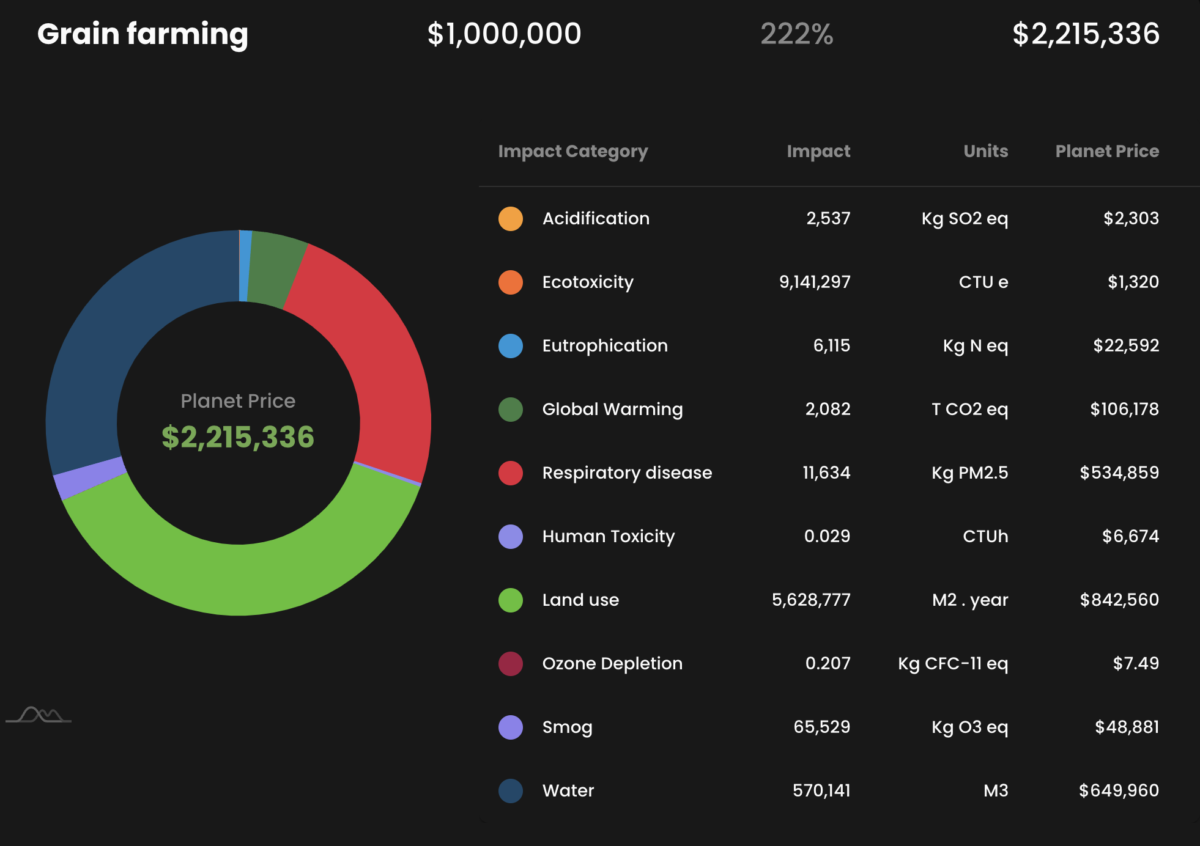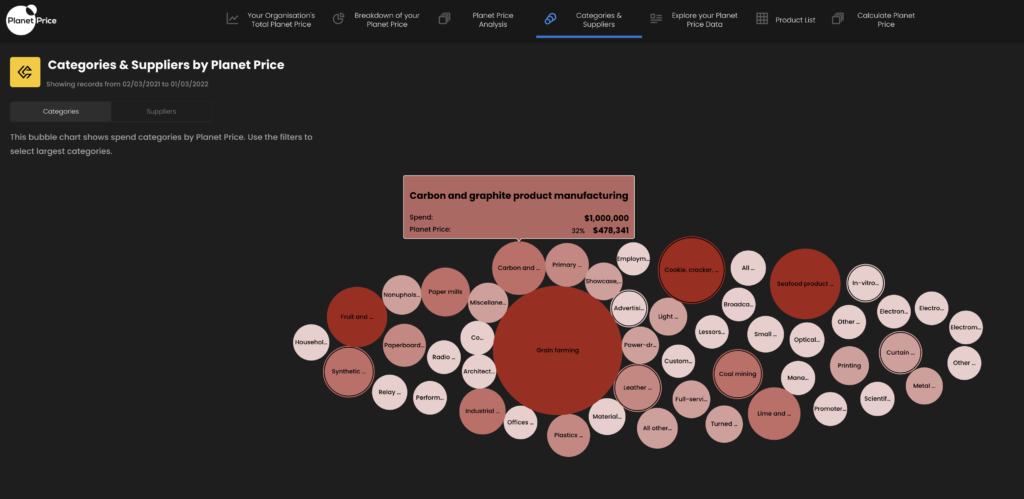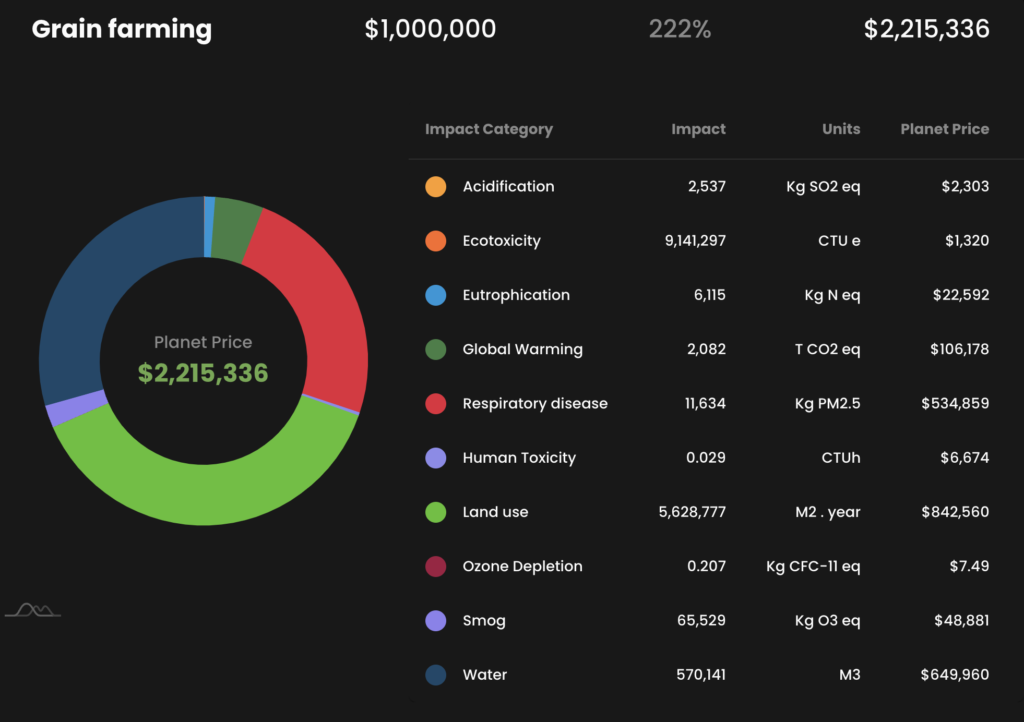Beyond Carbon – The High Impact of Scope 3 Emissions Across Agriculture

Part 2 – Agriculture and Land Use
This post is Part 2 in our Beyond Carbon – The Impact of Scope 3 Emissions Across Planetary Boundaries blog series. In this post we’ll look at Agriculture and Land Use.
Part 1 considered Biodiversity. If you missed it you can find it here.
Agriculture – A Leading Cause of Environmental Harm
Current agricultural practices are one of the leading causes of environmental harm, contributing to issues such as deforestation, water pollution, soil degradation, greenhouse gas emissions, and loss of biodiversity.
The Food and Agriculture Organization of the United Nations estimates that agriculture accounts for 70% of global freshwater withdrawals, 30% of greenhouse gas emissions, and is a major cause of deforestation, land degradation, and biodiversity loss. According to Our World in Data, land use accounts for 24% of food emissions, and agricultural expansion results in the conversion of forests, grasslands and other carbon ‘sinks’ into cropland or pasture resulting in carbon dioxide emissions.
Clearly, current agricultural practices are having a significant impact on the environment and contribute to a range of environmental problems. In fact, the agriculture sector represents a bigger problem than carbon, as it has significant challenges around using synthetic fossil-fuel derived inputs – which has become apparent across supply chains.
Global soils are dying. The Intergovernmental Science-Policy Platform on Biodiversity and Ecosystem Services (IPBES) found that land degradation, including soil degradation, is a major threat to global biodiversity and ecosystem services, with around 25 percent of the world’s land already degraded. The Guardian puts the amount of soil acutely degraded due to agriculture at 33%.
What can be done?
Planet Price by Industry
Here at Planet Price, we’re on a mission to help organizations tread lightly on the planet by reducing the environmental and social impact of their supply chain and operations. But to influence change, procurement teams need a simple, quantitative measure to help them balance economic, environmental, and social considerations.
Planet Price does this by providing a single metric (i.e., a Planet Price™), expressed in monetary terms, that calculates the societal cost of products and services. To calculate the Planet Price, we leverage artificial intelligence, environmentally extended input/output data, life cycle impact analysis and environmental pricing techniques (but that’s another story).
The screenshot below, created by the Planet Price Sustainable Procurement Analytics Platform, displays a view of calculated Planet Price by industry:

The size of the bubbles and shades of colors show intensity. As you can see, the largest industry category by far is grain farming, while most of the largest categories are agriculture related.
In this example, the Planet Price for the carbon and graphite category is highlighted. It shows that for every $1,000,000 spent on manufacturing carbon and graphite, there is an additional hidden societal cost, or Planet Price, of $478,341 for a total of 32% ($478,341/($1,000,000 + $478,341)).
Carbon and graphite manufacturing have the potential to negatively impact agriculture, as the disposal of waste generated during the manufacturing process, such as spent electrode material and dust, can contribute to land pollution, and potentially impact agricultural land.
Grain Farming Tops the Planet Price List
But for numerous industries, the Planet Price is actually higher than the economic cost. In fact, many of today’s industries would not be profitable if they were to pay their “Planet Price tax”. For example, Grain farming has a Planet Price of 222%, meaning its Planet Price far outweighs its economic cost:

What would happen if companies found out that the environmental cost to produce their products exceeded the economic costs?
Planet Price believes that this would be a major turning point for companies – and is the main reason why Planet Price aims to equip the industry with this type of data.
Ready to Explore More of the power of the Planet Price Platform?
Request a demo or a Scope 3 Tread Lightly Assessment



